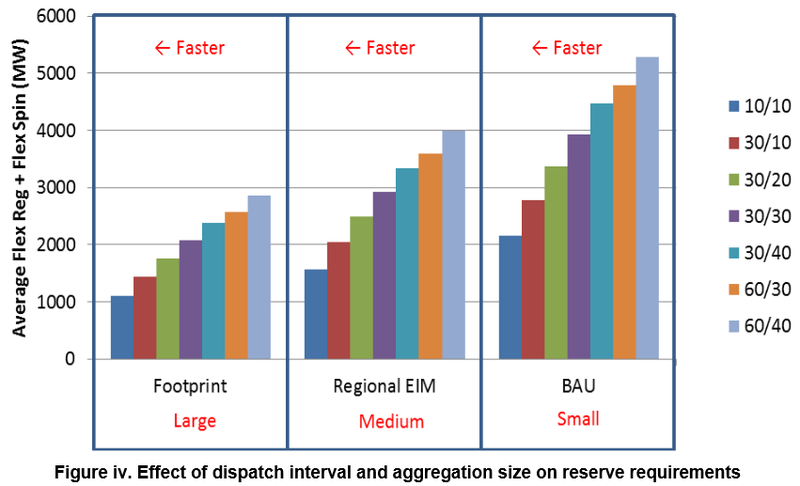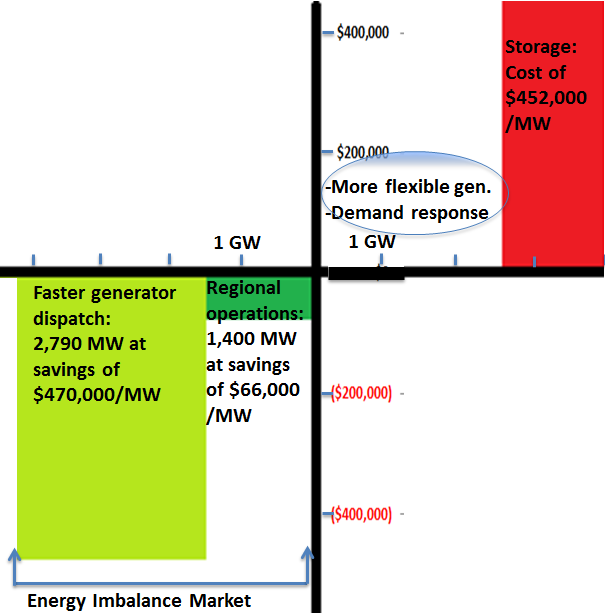News Release from windfair.net
Wind Industry Profile of
Grid operating reforms save US consumers more than $11 million in six months
Earlier this monthy, the California grid operator released a study that found consumers in the Western U.S. have saved more than $11 million over the last six months thanks to grid operating reforms that are also greatly helping to integrate more renewable energy.
Today’s study focuses on the Energy Imbalance Market, or EIM, between the California grid operator and the large Western utility PacifiCorp that was implemented last Fall. An Energy Imbalance Market is a voluntary market that allows utilities and other grid operators to trade energy over a significantly larger area, which allows them to balance out changes in electricity supply and demand with neighboring power systems. This is much more cost-effective than each individual grid operator managing its power system without regard for what its neighbors are doing. Thanks to the success of the EIM, other utilities are seeking to join it, while utilities in the Pacific Northwest are exploring launching their own EIM.
As shown in the National Renewable Energy Laboratory (NREL) chart below, an EIM greatly reduces the need for the reserves that are needed to accommodate all changes in electricity supply and demand. An EIM moves from a small grid operating area (represented on the right in the chart below) to a large market (represented on the left), while also enabling more frequent updates to power plant output (moving to the left in each of the three segments of the chart). Having more frequent updates allows for a far more accurate forecast of electricity demand and supply than is possible an hour or more ahead. Both reforms provide benefits even in the absence of renewable energy, as grid operators have always dealt with large variations in electricity supply and demand as people turn devices on and off and conventional power plants experience deviations in output. However, the benefits grow even larger as the use of wind and solar energy increases.

ess of the grid operating practices included in the EIM can also be seen in other parts of the country, where regional coordination and frequent updates to generation output are the standard operating procedure. Concerns about the reliable and cost-effective integration of wind energy are now almost exclusively relegated to the parts of the Western U.S. that are not part of the EIM and continue to use outdated grid operating practices. Grid operators in other parts of the country that use efficient practices, such as Texas and the Midwest, have found wind’s impact on reserve needs and costs to be trivially small.
Grid operating reforms are far more cost-effective than other integration solutions, like energy storage
Grid operating reforms like an EIM are by far the lowest hanging fruit for making the power system more flexible, and in fact they can be done at a negative cost to consumers. NREL calculated that a West-wide EIM would provide annual benefits of $1.312 billion from faster dispatch, and additional regional coordination benefits of $146 million from a region-wide EIM, while all estimates for the cost of the transition are at least an order of magnitude smaller.
Grid operating reforms like an EIM are more cost-effective than other options for making the power system more flexible and therefore better able to accommodate all sources of variability in electricity supply and demand. AWEA’s analysis of costs and benefits for the different options to provide flexibility for the grid are presented in the chart below (data available on page 38 of this report).The lowest cost options appear below the x-axis as they have a negative cost, while higher cost options appear above the x-axis. The results show that the Energy Imbalance Market (on the bottom left) provides flexibility at a negative cost, while energy storage (on the top right) would be much more expensive.Based on the flexibility needs identified in NREL’s Western Wind and Solar Integration Study, the flexibility provided by the grid operating reforms encompassed in an EIM would be more than enough to accommodate a very high level of renewable use at negative cost.

While energy storage can be used to provide a number of benefits on the grid, such as localized grid support, it is important to keep in mind there are many low-cost options for flexibility on the current power system, and large amounts of wind energy can be reliably integrated without adding energy storage. Making greater use of existing but underutilized flexibility, as an EIM does, is always going to be lower cost than adding a new resource, such as storage. Grid operating reforms that provide access to that underutilized flexibility should be the first priority in any effort to make the power system more flexible.
To receive more information on this article, our Newsletter or find out more about what w3.windfair.net has to offer, please, do not hesitate to contact Trevor Sievert at ts@windfair.net.
Please don't forget to follow us on Twitter: w3.windfair.net on Twitter
w3.windfair.net is the largest international B2B internet platform in wind energy – ultimately designed for connecting wind energy enthusiasts and companies across the globe.
- Source:
- Online Editorial, w3.windfair.net
- Author:
- Trevor Sievert, Online Editorial Journalist
- Email:
- ts@windfair.net
- Link:
- w3.windfair.net/...

